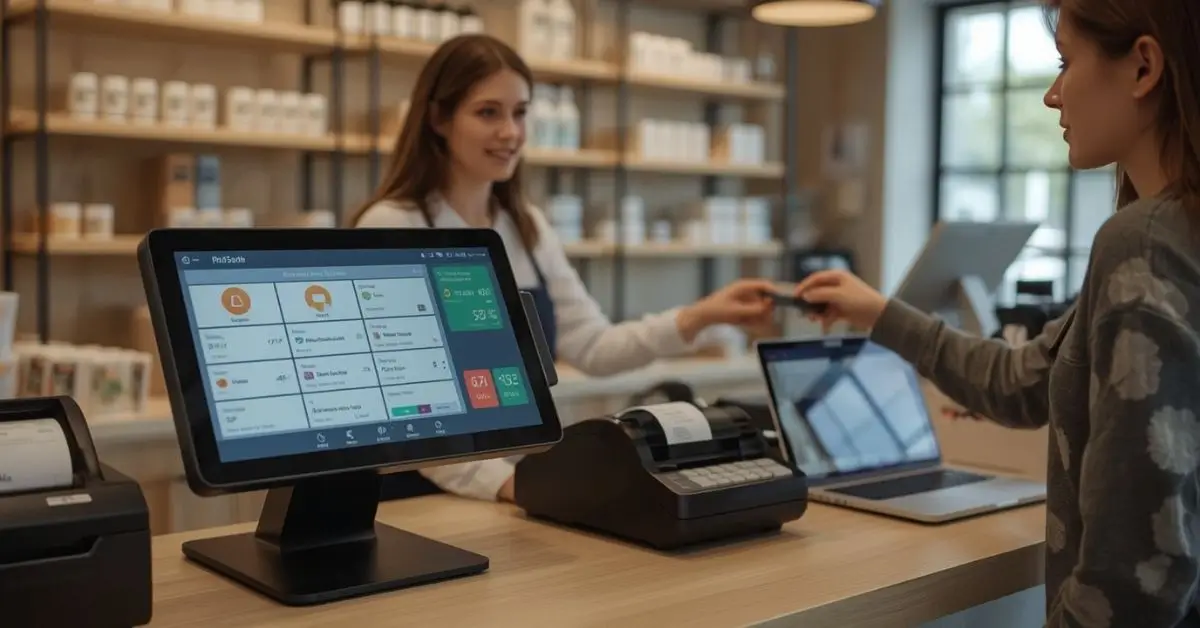BUSINESS
Ford Build and Price: Craft Your Perfect Ride

Ford Build and Price configurator, you unlock the power to tailor everything—from trim and powertrain to exterior paint and tech packages—to design a vehicle that fits your lifestyle. Through the online factory-order tool, you select your model, apply your specifications, and send a custom build request to your preferred dealer. Let’s explore how factory orders work, how to manage costs and incentives, and how to monitor your order from placement to delivery.
How the Ford Build & Price Tool Works
Using the official online experience, you begin by choosing a Ford model—be it F‑150, Mustang, Bronco, Explorer, or Maverick—and customizing all the options. Once configured, your build sheet displays itemized pricing with MSRP, optional packages, destination charges, and local dealer fees . When you submit the configuration, a dealership representative takes over to convert it into a factory-backed order, verify your deposit, and coordinate shipping .
This configurator gives transparent insights into MSRP versus potential added dealer markup (ADM) and highlights the price protection policy, which secures your vehicle’s base and factory-options pricing from manufacturer changes—though tariffs or market adjustments may still apply .
Deposits, Reservation Fees & Incentives
Many Ford models—especially highly desirable ones like electric F‑150 Lightning or Bronco—use a pre‑order reservation system. You may begin with a refundable $100 deposit, ramping to a binding $500 deposit when confirming your order. Once submitted, your order becomes factory-allocated, locking in pricing and incentive eligibility. Ford allows you to choose the best rebate at delivery, often benefiting consumers through price protection or bonus cash
Booking early can also help secure 0% APR financing offers, but keep in mind that shipments still depend on global supply factors.
Managing Dealer Markups & MSRP Integrity
While the build sheet clarifies MSRP, some dealers may still impose a markup above that—an aspect within their legal rights . Buying through a custom order often lets you avoid inflated lot pricing. Shopping around helps: multiple Reddit users confirm selecting dealers who honored MSRP on custom orders, reinforcing the importance of dealer selection
“Ford Country in Las Vegas honored MSRP for my custom order.
“Some dealers are marking up customer orders. Ask up front… If they won’t say or will mark up the order, go to another dealership.
You can further protect yourself by obtaining written agreements—authorized and signed build sheets ensure dealers can’t unexpectedly raise costs at delivery
Custom Configurations & Order Flexibility
The Build & Price tool offers extensive configuration choices: engine types (EcoBoost, hybrid, electric), interior trim materials, exterior colors, tow or off-road packages—often hundreds of combinations . If the online interface lacks a particular option (for instance, a unique wheel or accessory), your dealer may be able to add it on the official order sheet, working beyond the website’s limits .
You can often tweak or cancel your order before the vehicle enters production, offering flexibility if your preferences change—just coordinate with your sales team ahead of the build window
Tracking the Order via VIN
Once Ford assigns a Vehicle Identification Number (VIN), the factory order transitions into a trackable unit. You can monitor its status—assembly start, shipment, and delivery—via Ford’s official Vehicle Order Tracking portal or through communications from your dealer Dealers typically notify you at key stages—VIN assignment, shipping, and when it’s ready for your pre-delivery inspection.
Average lead times vary by model and market conditions: mainstream trims typically arrive in 6–12 weeks, though complex models or high demand may extend to 3–6 months Chip shortages or logistics can affect timelines, but dealers update estimates as VIN milestones hit the system.
Delivery, Pre-Delivery Inspection & Finalizing
Before delivery, your Ford undergoes a Pre-Delivery Inspection (PDI), ensuring everything meets standards. Dealers then walk you through final paperwork, including rebate selection, any last-minute accessories or dealer-installed add-ons, and financing terms
Be sure to double-check that final pricing matches your locked-in MSRP and confirmed add-ons. If a dealer introduces any new markup or fee, remind them of the written agreement and consider walking away if necessary.
Frequently Asked Questions (FAQs)
Q: Can I adjust or cancel my custom build after placing it?
Yes—so long as the vehicle hasn’t reached the production ramp. Contact your dealer early to change features or withdraw the order .
Q: Does Ford lock in price from order to delivery?
Yes, the Price Protection policy secures the MSRP and factory options from cost increases after the order date
Q: Is a dealer markup (ADM) allowed on factory orders?
Legally, yes. But many dealers respect custom-order MSRP. Always confirm and obtain a signed price sheet to avoid surprise fees .
Q: How do I track my build?
After VIN assignment, use Ford’s Vehicle Order Tracking or rely on your dealer’s updates to follow assembly and shipment progress .
Q: How long does a custom Ford order take?
Typically 6–12 weeks, though high demand or supply constraints can push this to 3–6 months .
Q: Are rebates locked at order time?
Yes—Ford lets you choose the most favorable incentive at the time of delivery, even if another deal emerges later
Conclusion
The Ford Build and Price process empowers buyers with full control over customization, transparent pricing comparisons, and factory order tracking. When paired with deposit systems, price protection, and careful dealer selection, it provides a reliable path to your ideal vehicle. By verifying MSRP integrity, monitoring VIN progress, and coordinating PDI steps, you ensure a smooth delivery and can drive away knowing you truly crafted your perfect ride.
BUSINESS
How an FSI Blog Post Shapes Digital Transformation

If you’ve ever wondered why content creation is exploding in finance and strategy, the answer lies in one word: trust. Decision-makers in banking, fintech, and investment sectors want resources they can rely on. An FSI blog post offers a balance between thought leadership and accessibility, making it a cornerstone for firms looking to influence conversation in 2025.
One banking professional on LinkedIn shared: “I look forward to weekly blog updates from industry experts because they cut through jargon and give me practical takeaways I can actually use.”
This is exactly the type of value-driven content we’ll break down—designed for visibility, engagement, and long-term authority.
FSI Industry Insights: Setting the Stage
Every strong banking and finance blog starts with FSI industry insights. These aren’t just statistics or reports—they’re the story behind the numbers. Whether it’s global interest rate changes, blockchain adoption, or ESG-focused investments, your blog needs to contextualize the trends.
- Example insight: Global fintech investments exceeded $200B in 2024, showing resilience despite regulatory tightening.
- How to write it: Go beyond the data. Explain why it matters for businesses, investors, or consumers.
The best-performing global financial services blogs today mix timely reporting with a forward-looking lens.
Financial Services Innovation in Blog Writing
Innovation isn’t only happening in products—it’s also in how you present content. Financial services innovation often means showing how AI, blockchain, or new compliance frameworks affect everyday operations.
When writing an FSI blog post:
- Use case studies of fintech startups or banks implementing change.
- Compare “old way vs. new way” approaches.
- Keep explanations practical for non-technical readers.
This blend of expertise and accessibility keeps your blog aligned with Google’s Helpful Content System, which prioritizes user value over keyword stuffing.
FSI Digital Transformation: A Core Theme
Digital transformation dominates the future of the FSI sector. From cloud migration to cybersecurity, the audience for an FSI blog post expects actionable insights here.
Tips for covering FSI digital transformation:
- Break down buzzwords into simple, relatable concepts.
- Add visuals like process charts or infographics when possible.
- Use real-world quotes to humanize the change.
For example, one CIO recently said, “Digital transformation in finance isn’t about replacing people—it’s about amplifying them.” Including this kind of perspective boosts credibility.
FSI Strategy Updates: Staying Ahead
Strategy posts often outperform others in traffic because they help readers make direct decisions. Whether you’re discussing risk management, regulatory compliance, or global expansion, FSI strategy updates are must-have content pillars.
Actionable approaches:
- Share step-by-step guides on implementing new regulations.
- Compare strategies used in developed vs. emerging markets.
- Include “what’s next” predictions that position you as a thought leader.
Banking and Finance Blog Essentials
A banking and finance blog isn’t just about news—it’s about explaining complexity in a digestible way. The key here is readability.
- Keep paragraphs under four lines.
- Use subheadings generously.
- Write in a conversational tone without losing authority.
The tone shift between “expert” and “friendly” ensures your FSI blog post appeals both to analysts and to casual readers exploring trends.
FSI Content Marketing: Driving Visibility
In 2025, an FSI blog post is more than an article—it’s a content marketing tool. The best financial brands use their blogs to:
- Nurture leads by offering free downloadable reports.
- Boost SEO with well-placed secondary keywords like “FSI trends 2025” or “technology in financial services.”
- Repurpose content into LinkedIn posts, newsletters, or podcasts.
Pro tip: End each blog with a call-to-action (CTA) like “Explore more insights” or “Subscribe for weekly updates.”
FSI Trends 2025: What to Watch
If there’s one section readers won’t skip, it’s FSI trends 2025. These predictions help professionals prepare for the unknown.
- Trend 1: AI-driven compliance tools will become mainstream.
- Trend 2: Sustainability-linked finance products will see rapid adoption.
- Trend 3: Cross-border digital payments will outpace traditional banking growth.
Framing these within your FSI blog post shows authority while staying relevant to current search intent.
Global Financial Services Blog: A Broader View
When writing with a global audience in mind, a global financial services blog should compare practices across regions.
- How does U.S. regulation differ from EU digital finance laws?
- What can Asian fintech markets teach Western institutions?
- Which emerging markets are setting examples in mobile banking?
Readers love comparative analysis, especially when tied back to their local context.
The Future of the FSI Sector
Looking ahead, the future of the FSI sector rests on adaptability. Blogs that successfully project future scenarios—without overhyping—stand out in search rankings.
Possible angles:
- Will crypto play a stabilizing role or remain volatile?
- How might AI reshape customer service roles?
- Could decentralized finance (DeFi) pressure traditional institutions?
These explorations make your blog more than informational—they make it memorable.
Technology in Financial Services: Practical Coverage
Technology is no longer a side note—it’s the backbone of finance. Writing about technology in financial services means covering both opportunities and risks.
- Opportunities: Faster transactions, AI-powered risk detection, improved personalization.
- Risks: Data privacy, cybersecurity threats, dependence on third-party platforms.
A balanced FSI blog post recognizes both sides, which aligns perfectly with EEAT standards (Experience, Expertise, Authoritativeness, Trustworthiness).
FAQ’s
What is an FSI blog post?
An FSI blog post is a content piece that focuses on finance, strategy, and innovation topics, designed to inform and engage professionals in the financial services sector.
How do I write an FSI blog post for 2025?
Start with clear FSI industry insights, include trends like digital transformation, and optimize for SEO using content marketing best practices.
Why are FSI blog posts important for content marketing?
They establish authority, improve search rankings, and attract decision-makers by providing value-driven banking and finance blog content.
What are the best topics for FSI blog posts in 2025?
Focus on FSI trends 2025, financial services innovation, and technology in financial services for high-impact, relevant content.
Final Thoughts
A well-crafted FSI blog post in 2025 isn’t about chasing keywords—it’s about blending industry expertise, readability, and trustworthiness. When you provide genuine insights, keep content scannable, and anticipate reader questions, your blog becomes more than just another article—it becomes a resource professionals return to again and again.
BUSINESS
What Is EPOS and How Can It Transform Your Business?

If you run a shop, café, hotel, bar, or franchise business, chances are you’ve heard the term EPOS. But many owners still ask: “What is EPOS, and do I really need it?”
An electronic point of sale system (EPOS) does much more than process payments. It helps you track sales, manage inventory, monitor staff performance, and even connect with accounting or e-commerce platforms. In today’s competitive world, an EPOS system is no longer a luxury — it’s a necessity for efficiency, accuracy, and customer satisfaction.
This guide explains everything you need to know about EPOS: how it works, who needs it, what it costs, and how to choose the right solution for your business.
What Is EPOS?
EPOS stands for Electronic Point of Sale. It’s the digital evolution of a traditional cash register. Instead of just handling payments, an EPOS till system combines hardware and software to give you real-time business insights.
A typical EPOS terminal may include:
- A touchscreen till or tablet
- Card reader for contactless and chip & pin payments
- Barcode scanner
- Receipt printer
- Cloud-based EPOS software for reporting and analytics
In other words, an EPOS system is both a transaction tool and a business management platform.
What Does an EPOS System Do?
An EPOS system helps businesses streamline day-to-day operations. Common features include:
- Processing payments (cash, card, mobile wallets)
- Tracking sales by product, time, or location
- Managing inventory with automatic stock updates
- Recording customer data for loyalty programs
- Integrating with accounting software for easier bookkeeping
- Generating reports on revenue, margins, and staff performance
According to Hospitality Technology, 71% of businesses using EPOS systems say it improves customer service through faster transactions.
How Does an EPOS System Work?
Here’s a simple breakdown of the process:
- Customer purchases an item – cashier scans or enters details.
- EPOS software records the transaction – including price, time, and stock reduction.
- Payment is processed – via cash, card, or digital wallet.
- Data syncs in real-time – if it’s a cloud-based EPOS, managers can view reports from anywhere.
This combination of hardware and software makes EPOS more powerful than a traditional till.
EPOS vs POS: What’s the Difference?
While the terms are often used interchangeably, there’s a clear distinction:
| Feature | POS (Point of Sale) | EPOS (Electronic Point of Sale) |
|---|---|---|
| Payment processing | Yes | Yes |
| Stock management | No | Yes |
| Reporting & analytics | Limited | Advanced |
| Cloud access | Rare | Common |
| Integration options | Minimal | Extensive (e-commerce, accounts) |
In short, a POS is basic, while an EPOS software solution provides a full business toolkit.
Benefits of EPOS for Small Businesses
For small businesses and startups, an EPOS system can be a game-changer:
- Saves time with automated stock and sales tracking.
- Reduces errors compared to manual cash registers.
- Improves decisions with real-time insights.
- Enhances customer service with faster transactions.
- Supports growth by scaling with additional tills or locations.
Research by Retail Systems shows that businesses adopting EPOS see up to 30% improvement in efficiency within the first year.
Types of EPOS Systems
Different businesses require different setups.
Cloud-Based EPOS
- Stores data online
- Access reports anywhere
- Ideal for multi-location businesses
Mobile EPOS
- Tablet or smartphone-based
- Great for restaurants and cafés
- Enables tableside ordering and payment
Traditional EPOS Till System
- On-site hardware and software
- Reliable for high-volume businesses
- Less flexible than cloud options
EPOS in Retail and Hospitality
Retail EPOS Solutions
- Inventory sync across stores
- Barcode scanning for speed
- Promotions and loyalty programs
Hospitality EPOS Systems
- Split bills and table management
- Menu customisation
- Integration with kitchen display systems
According to Caterer.com, restaurants using EPOS reduce order errors by 20–30%, saving significant costs annually.
How Much Does an EPOS System Cost?
The cost of an EPOS system depends on features and setup.
| Business Size | Estimated Cost Range (UK) |
|---|---|
| Small café or shop | £40–£100/month per till |
| Medium retail store | £100–£200/month |
| Multi-location chain | £200–£500+/month |
Additional hardware (printers, scanners) may cost extra.
How to Choose the Right EPOS System
When evaluating options, consider:
- Business size and growth plans
- Cloud vs traditional till preferences
- Integrations with e-commerce or accounts
- Ease of use for staff training
- Customer support and updates from provider
Is an EPOS System Worth It for a Small Shop?
Yes — even small shops benefit from:
- Reduced admin time
- Accurate inventory
- Better cash flow insights
- Ability to compete with larger retailers
Advantages of EPOS for Multi-Location Businesses
For franchises or chains, an EPOS system offers:
- Centralised stock management
- Unified reporting across branches
- Remote performance monitoring
- Easier staff training with consistent systems
Difference Between EPOS Hardware and Software
- EPOS Hardware: tills, tablets, scanners, printers, card readers.
- EPOS Software: sales tracking, inventory, analytics, reporting.
Together, they form the full EPOS terminal system.
FAQs
What does an EPOS system do?
It processes sales, manages inventory, tracks customers, and generates reports.
How does an EPOS system work?
It combines hardware (tills, scanners) and software to process payments and update records in real-time.
What’s the difference between EPOS and POS?
POS is basic, while EPOS adds advanced reporting, stock control, and integrations.
How much does an EPOS system cost?
Small shops may pay £40–£100 per month, while larger businesses may spend £200–£500+.
Do restaurants need an EPOS system?
Yes, for order accuracy, speed, and integration with kitchen systems.
Can EPOS integrate with accounting software?
Most modern systems sync with QuickBooks, Xero, or Sage for seamless bookkeeping.
Conclusion
Understanding what is EPOS is vital for any business handling transactions. From small shops to multi-location franchises, an electronic point of sale system improves efficiency, reduces errors, and delivers insights that drive growth.
By choosing the right EPOS till system — whether cloud-based, mobile, or traditional — you can future-proof your business and stay competitive in today’s fast-paced retail and hospitality markets.
BUSINESS
mPaaS: Powerful Precision for Modern Measurement

mPaaS stands for megapascal absolute—a unit of pressure measurement that’s widely used in engineering, science, and industry. The “m” stands for “mega” (one million), “Pa” is the symbol for pascal (the SI unit of pressure), and the “a” indicates “absolute” pressure, as opposed to gauge pressure.
Why does this matter? Using the right unit—and understanding how to convert between them—can mean the difference between a successful project and a costly mistake.
mPaaS vs. Other Pressure Units: The Basics
Before we dive into conversions, let’s clarify the most common pressure units:
- Pascal (Pa): The SI base unit for pressure. 1 Pa = 1 newton per square meter.
- Megapascal (MPa): 1 MPa = 1,000,000 Pa.
- Pounds per square inch (psi): Common in the US and UK. 1 psi ≈ 6,894.76 Pa.
- Bar: 1 bar = 100,000 Pa.
- mPaaS: Megapascal absolute, meaning the pressure is measured relative to a perfect vacuum, not atmospheric pressure.
mpa a psi: How to Convert Megapascal to PSI
One of the most common questions is how to convert mpa a psi (megapascal to pounds per square inch). Here’s the quick formula:
- 1 MPa = 145.0377 psi
So, if you have a pressure of 2 MPa, that’s 2 x 145.0377 = 290.08 psi.
Pro tip: For quick estimates, multiply MPa by 145 to get psi.
mpa to pa: Understanding the Scale
If you need to convert mpa to pa (megapascal to pascal), remember that “mega” means one million:
- 1 MPa = 1,000,000 Pa
So, 0.5 MPa = 500,000 Pa.
This is especially useful in scientific calculations, where pascals are the standard SI unit.
psi to mpa: Going the Other Way
Need to convert psi to mpa? Here’s the formula:
- 1 psi = 0.00689476 MPa
So, 100 psi = 100 x 0.00689476 = 0.6895 MPa.
Tip: Divide psi by 145 to get a quick MPa estimate.
mpa en psi: Pressure Conversions in a Global World
In many industries, you’ll see mpa en psi (MPa in psi) in technical documents, especially when working with international teams or equipment. Always double-check which unit is being used—mixing them up can lead to serious errors.
A real-world example:
“We once ordered hydraulic parts rated for 10 MPa, but the supplier thought it was 10 psi. The parts failed in testing. Now, we always specify both units: 10 MPa (1,450 psi).”
Why Use mPaaS? The Importance of Absolute Pressure
Most pressure measurements are either gauge (relative to atmospheric pressure) or absolute (relative to a vacuum). mPaaS (megapascal absolute) is crucial in applications where atmospheric pressure changes matter, such as:
- Scientific experiments
- High-precision manufacturing
- Aerospace and vacuum systems
Using absolute pressure ensures consistency and accuracy, especially when comparing data from different locations or altitudes.
How to Read and Write mPaaS Correctly
- mPaaS: Megapascal absolute (e.g., 1.2 mPaaS)
- MPa(g): Megapascal gauge (e.g., 1.2 MPa(g))
- psi(a): Pounds per square inch absolute
- psi(g): Pounds per square inch gauge
Always check the “a” or “g” to know if you’re dealing with absolute or gauge pressure.
mPaaS in Industry: Where You’ll See It
- Oil & Gas: Wellhead and pipeline pressures are often measured in MPa or mPaaS.
- Automotive: Fuel injection systems use MPa for high-pressure ratings.
- Manufacturing: Hydraulic presses and injection molding machines.
- Aerospace: Cabin and fuel tank pressures.
- Medical Devices: Autoclaves and sterilization equipment.

mPaaS and Digital Tools: Converting on the Fly
In 2025, you don’t need to memorize conversion formulas. Use online calculators, smartphone apps, or even voice assistants:
- “Hey Siri, convert 5 MPa to psi.”
- “Alexa, what’s 200 psi in MPa?”
Many engineering software platforms now let you switch between units with a click.
mPaaS vs. Gauge Pressure: Why the Difference Matters
Gauge pressure ignores atmospheric pressure, while absolute pressure (mPaaS) includes it. For example:
- Tire pressure: Usually measured as gauge (what’s above atmospheric).
- Vacuum systems: Measured as absolute (how far from a perfect vacuum).
Mixing up the two can lead to dangerous mistakes, especially in high-pressure or vacuum applications.
mPaaS in Education: Teaching the Next Generation
Engineering and science students now learn about mPaaS from day one. Understanding how to convert mpa a psi, mpa to pa, and psi to mpa is a core skill for anyone entering technical fields.
A student shared,
“I used to get confused by all the pressure units. Now, I keep a conversion chart on my phone and double-check every calculation.”
mPaaS in Everyday Life: More Common Than You Think
- Car tires: Often listed in psi, but some manuals now include MPa for global consistency.
- Pressure cookers: Safety valves rated in kPa, MPa, or psi.
- Scuba diving: Tank pressures in bar, psi, or MPa.
mPaaS and Safety: Why Accuracy Is Critical
Incorrect pressure readings can lead to:
- Equipment failure
- Safety hazards
- Costly downtime
Always use the correct units and double-check conversions, especially when working with high-pressure systems.
mPaaS Conversion Table: Quick Reference
| Unit | To MPa | To psi | To Pa |
|---|---|---|---|
| 1 MPa | 1 | 145.0377 | 1,000,000 |
| 1 psi | 0.00689476 | 1 | 6,894.76 |
| 1 Pa | 0.000001 | 0.000145038 | 1 |
mPaaS in 2025: Trends and Innovation
- Smart sensors: Real-time pressure monitoring with automatic unit conversion.
- IoT integration: Pressure data sent directly to cloud dashboards in your preferred units.
- AI-powered alerts: Detect abnormal pressure changes and suggest corrective actions.
mPaaS and International Standards
This ensures safety and compatibility across borders.
mPaaS: Pros and Cons
Pros
- Universal in science and engineering
- Easy to convert to other units
- Reduces confusion in international projects
Cons
- Not as familiar in the US (psi is still common)
- Requires careful attention to “a” (absolute) vs. “g” (gauge)
FAQs
A. mPaaS means megapascal absolute—a unit of pressure relative to a perfect vacuum.
A. Multiply MPa by 145.0377 to get psi.
A. Multiply MPa by 1,000,000 to get Pa.
A. Multiply psi by 0.00689476 to get MPa.
mPaaS in the Cloud: Digital Pressure Management
Modern factories and labs use cloud-based platforms to monitor and control pressure in real time. These systems automatically convert between mPaaS, psi, and other units, reducing human error and improving safety.
mPaaS in Research: Precision Matters
Scientists rely on mPaaS for experiments where even tiny pressure differences matter—like in chemistry, physics, and materials science.
mPaaS and Environmental Monitoring
Weather stations and environmental sensors use mPaaS to track atmospheric pressure, helping predict storms and monitor climate change.
Final Thoughts
In 2025, mPaaS is more than just a unit—it’s a bridge between science, industry, and everyday life. Whether you’re converting mpa a psi, mpa to pa, or psi to mpa, understanding these units helps you work smarter, safer, and more globally.
-

 BUSINESS2 months ago
BUSINESS2 months agomPaaS: Powerful Precision for Modern Measurement
-

 BLOG4 months ago
BLOG4 months agoToyota Sequoia Towing Power: What Can It Really Haul?
-

 BLOG4 months ago
BLOG4 months agoGolden Cream of Spain: A Heritage Rich in Taste and Tradition
-

 BLOG3 months ago
BLOG3 months agoFinding Home in China: A Journey Through Culture and Comfort
-

 BLOG3 months ago
BLOG3 months agoYE Tracker: Your Ultimate YouTube Earnings Companion
-

 EDUCATION3 months ago
EDUCATION3 months agoStolen Mail, Lost Checks, Hijacked Credit
-

 FASHION4 months ago
FASHION4 months agoParfum vs Cologne: What’s the Real Difference?
-

 BLOG3 months ago
BLOG3 months agoDJ On Board: Spinning Beats at Every Turn


